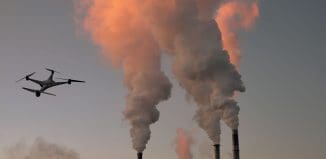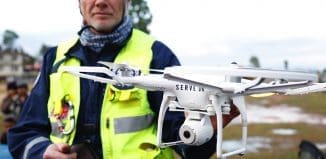New Hybrid UAV to Revolutionize Maritime Operations
This post is also available in:  עברית (Hebrew)
עברית (Hebrew)
The launching and recovery of aircraft from and back to ships is usually constrained by space. A new hybrid quadrotor (HQ) UAV platform with the ability of vertical take-off and landing (VTOL) and conversion to fixed wing (FW) flight allows for operations from ships while maintaining the range and endurance of an FW aircraft.
Moreover, the hybrid quadrotor technology eliminates the need for rail launchers and aerial capture technologies such as large nets and wires.
The HQ-55 system has been developed by the Unmanned Aircraft Systems Program of NOAA (National Oceanic and Atmospheric Administration), acting within the US Department of Commerce. The organization has been working toward building this capability with the goal of making vertical measurements of aerosol properties from an NOAA ship.
The HQ-55 is being designed with a 15-lb payload capability, 5 to 15-hour flight endurance depending on payload weight, and an altitude ceiling of 14,000 ft. At a total weight of under 55-lbs (including the payload) the HQ-55 will be compliant with FAA Part 107 which allows for the operation of UAV in National Airspace, as reported in uas.noaa.gov.
Such an HQ UAV would greatly enhance many areas of NOAA research, including climate and air quality studies, fishery and mammal surveys, oil spill detection, weather observations, and post severe weather damage assessments.
In addition, NOAA PMEL is developing an aerosol payload for integration into the HQ-55 with instruments able to measure total particle number concentration, particle number size distribution, aerosol light absorption, solar irradiance and sky radiance, aerosol composition, and meteorological parameters.
The payload is modular in design to allow for quick swapping in and out of the UAV so that multiple payloads, each with different measuring capabilities, can be used during a given observation period.
A previous version of the payload was flown in the Arctic (Svalbard, Norway) in 2011 and 2015 to investigate climate impacts of soot pollution.
First shipboard tests of the HQ-55 with the integrated aerosol payload are planned for Spring 2019 from an NOAA ship.





























